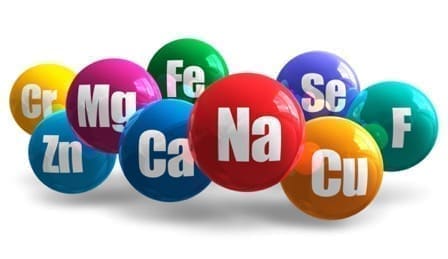
The composition of water is:
- 75% of H2O molecules (65% of oxygen & 10% of hydrogen)
- 18% carbon (dissolved in water)
- 4% of dry residues dissolved in water: minerals (ionized salts) & trace elements
Minerals in water (ions = electrically charged particles) are the dry residues remaining in water after evaporation at 180 ° C. Dry residues are calculated according to the electrical conductivity of the water expressed in µS cm-1. For example: tap water with a hardness of 37 ° f has a conductivity of +/- 647 µScm-1, i.e. 670 x 0.71592 = 463 mg / L of dry residue (including 370 mg of limescale); The WHO (World Health Organization) advises a maximum of 1,000 mg / L of dry residues. European directives (80/778 / EEC of the Council of the European Communities of July 15, 1980 relating to the quality of water intended for human consumption) set the quantity of dry residues, after drying at 180 ° C, at a maximum of 1,500 mg / liter doctors believe that healthy water should contain a variety of inorganic minerals and trace elements containing between 50 and 500 mg / liter for daily use.- Inorganic minerals (their presence in water varies depending on the geographic areas from which it was drawn!): calcium, magnesium, sodium, potassium, phosphorus, bicarbonates; measured in mg / L
- Between 5% and 25% of them are assimilable by the body (they are evacuated via the kidneys-urine) and this all the more easily since they have been restructured in colloidal form and ionized by the Biodynamizer®
- 80% of these minerals consist of limescale or scale = CaCO3 (Calcium Carbonate) + MgCO3 (Magnesium Carbonate) which is measured by the hardness of the water, expressed in TH (French degrees); 1 ° f hardness = 10 mg / l CaCO3
- Trace elements: natural synergy of fluorine, selenium, silicon, iron, copper, zinc, cobalt, bromine, manganese, iodine, chromium, molybdenum,…; measured in µg / L and fully assimilable
- Inorganic minerals (their presence in water varies depending on the geographic areas from which it was drawn!): calcium, magnesium, sodium, potassium, phosphorus, bicarbonates; measured in mg / L
- 3% nitrogen
Importance of minerals in drinking water
- Hard water provides the amount of calcium and magnesium our body needs to promote bone consolidation, help muscles and the nervous system work properly, and prevent the risk of cardiovascular disease or osteoporosis. It also participates in the defence of the human body. « The mineral elements present in tap water, by participating in the daily mineral supply necessary for the proper functioning of the body, have a definite beneficial role for health. Calcium in water could also play a role in protecting against cardiovascular disease. The role of calcium in fat elimination and blood cholesterol regulation is also recognised » (source Ministry of Health France 2006).
- Natural waters contain mineral salts, mainly calcium and magnesium (+/- 80%). These minerals are bioavailable and therefore easily absorbed (intestinal absorption) by the body like foods containing minerals. Studies on the subject estimate this absorption rate to be around +/- 25%! The minerals contained in natural water therefore participate between 20% and 50% * in the Recommended Nutritional Intake (RNI) of calcium and magnesium for one person (for an adult M / F: calcium requirement +/- 900 mg / d, in magnesium +/- 400 mg / d)! (* depending on the mineral content of the water and the age of the persons concerned). Calcium and magnesium are therefore useful for health. Calcium contributes to bone health, has a beneficial role in hypertension, cardiovascular accidents, colon cancer. Magnesium is involved in the activation of more than 300 enzymatic systems, fights fatigue, diabetes and coronary insufficiency as well as osteoporosis … Knowing that the average population has an average calcium deficiency of +/- 40% ( average nutritional needs) and even 70% for magnesium, it seems us essential to drink water with a mineral content of around +/- 400 to 500 mg / L! Source: Study on the absorption of calcium and magnesium in natural mineral waters, Patrice Fardellone, CHU Amiens, Université Picardie Jules-Verne, 2015
- The WHO (World Health Organization) speaks of an “optimum below 1,000 mg / liter“.
- The Superior Council of Public Hygiene of France fixes in its decrees of 1990 and 1995 relating to the quality of water intended for human consumption the quantity of dry residues, after drying at 180 ° C, at maximum 1,500 mg / liter.
- It is also important to have calcium-magnesium (components of limescale) in the water because of the rounder and velvety taste of water containing mineral salts.





